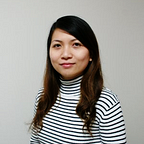The article originally written by Victor Corral, Experience Designer at mct, shared at mct-DMN’s Blog
Anticipating the Changes
How do you identify changes in consumer or user demands? How do you design offerings that fit future consumer expectations, in order to not release them to the market already obsolete? Nowadays we find multiple tools available to track trends and consumer behavior. Nonetheless, trend analytic tools and similar offerings, are useful to monitor and understand mainstream trends, those that have already hit the late majority and laggard groups, but they are very limited to help imagine what is coming next from the innovators or early adopters’ side, making organizations that use these methods, in many occasions, late to the party, jumping into trends that are already decaying or changing, making new products or services nearly irrelevant.
In order to be able to understand what may come next, what users or consumers may be demanding in the near future or far future, or what trends may be appearing in the horizon, it is key to observe and study innovator and early adopter groups, those who instigate change, with diverse and socially and culturally active network. This way, being able to identify and collect “weak signals” (a news items, photo, service, object, story or event that suggests a potential disruption that could turn into a trend) that we can later analyze to help us with the process.
To do this, it is important to understand what are the best and most effective “locations” where to perform these observation and study activities, both online and offline. One of these ideal spots are design weeks across the world, where diverse professional practitioners, organizations and talented students exhibit their latest works.
At mct we have vast experience attending design weeks and events around the world, and a couple months ago we visited Dutch Design Week 2022 in Eindhoven, The Netherlands, where we attended live events, visited exhibitions and met many innovators and designers that inspired us. Since one of our main goals of this visit was to collect ”weak signals”, we thought we would dedicate this article entry to list a few of the examples we consider the most exciting, grouped into topics or categories that represent potential trends and showcase shared values.
If your organization is interested in learning further about the implications of these signals, how and where to find and collect more examples, what to do with them or learn hands on how these can impact and be of great use for your future innovations, feel free to get in touch with us. We have plans to attend various design events, and design weeks during 2023, that we will support with our “Conference Related Services” offering, starting with Interaction23 in Zurich, Switzerland, Milan Design week (link) and SXSW in Austin, Texas.
Signals to be on Top of the Game
This year’s Dutch Design week’s events, exhibitions and showcases also shared a common focus or direction, similar to in Epic 2022 and SDN conferences on the urgency to take concrete action, explore solutions and build collaborations to make our near and long term future better for everyone. It is no surprise then, that a lot of the directions we will be exploring in this article touch different sides of this thinking.
Colonialism Sequels on the Spot:
One of the topics that was explored by various designers during this design week was the past and present implications of colonialism. Different projects reflected and brought attention to the topic and shone a light on how countries and organizations still to this day profit from old patterns and practices. Artists and designers bring awareness to the topic and use their medium and experience to touch upon particular examples that reflect a global reality.
Visualizing Pollution
Pollution is often seen or portrayed as something external to the average citizen, or essentially the responsibility and outcome of big corporations’ actions. Current trends on sustainability (very often part of Greenwashing campaigns) like the interest and visibility of Carbon Offsets, make people have a hard time understanding the reality of greenhouse gases, and believe their consumer attitudes may not have an impact in the final result. Designers, turn pollution into crafts, art pieces and stories to fight this misinformation and help visualize pollution associated to our daily activities and attitudes.
Designing Circular Models in Existing Flows
The circular economy has become ubiquitous to innovation, business and design conversations, nonetheless, often associated with new products, business or ideas. Artists and designers at Dutch Design Week, showed with their projects, that there are already in nature and in our long existing industrial processes, many opportunities of circularity, providing new value to byproducts of other processes, turning the results into sustainable, attractive and useful solutions.
Bio Materials for Regenerative Futures
Fashion, packaging, furniture and many other industries rely nowadays in unsustainable materials and practices to achieve their production and economic goals. To achieve a regenerative future, where materials are more sustainably sourced, used and managed, many designers and organizations are exploring how bio materials can substitute current industry stablished materials.
Digitally Altered Realities
With an ever-growing digitalized reality, the meaning and perception of objects and ourselves is slowly being modified in our mind. Designers and artists explore how this is changing, affecting what we expect from products, how we go about our relationships with others and how designer’s role changes due to this new situation.
The article is also presented in Japanese and published at mct’s Blog
